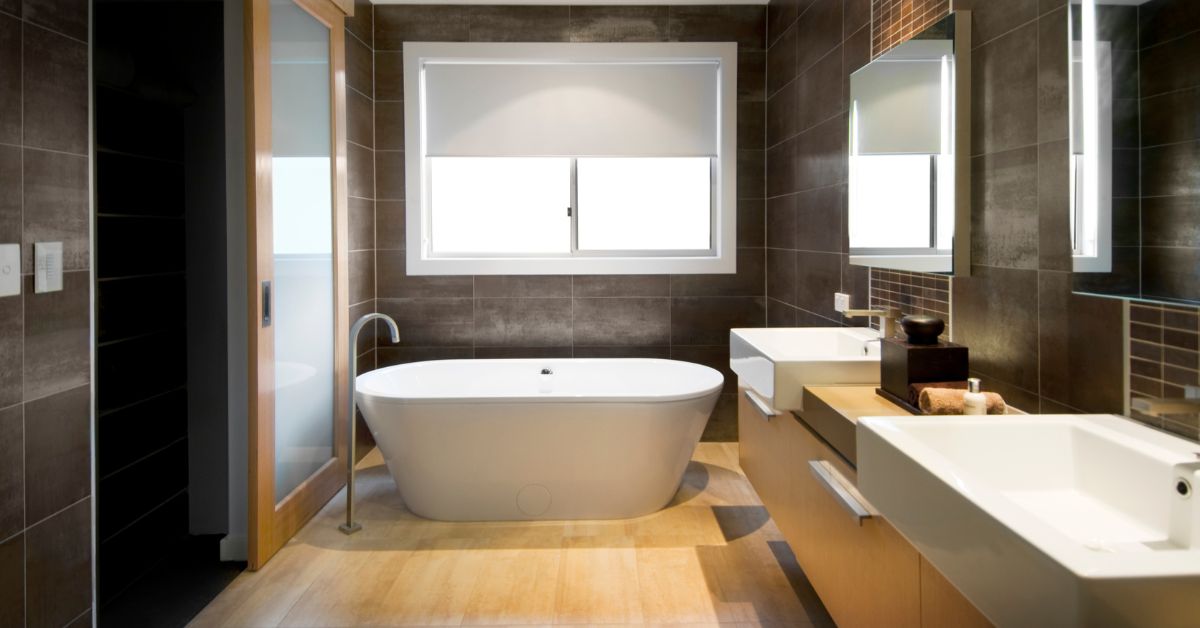Contents
Introduction to Wood Ceilings
Wood ceilings are a timeless and versatile design choice that can add warmth and character to any home. Whether aiming for a rustic cabin feel or a modern farmhouse vibe, wood ceilings offer endless possibilities for creating a stunning visual impact.
In this blog post, we’ll explore five popular types of wood ceilings that can elevate the style of your space. Each option brings unique charm and appeal, from tongue and groove to shiplap. So, if you’re ready to take your ceiling from bland to grand, let’s dive into the world of wood!
Benefits of Choosing a Wood Ceiling
- When it comes to home design, the ceiling is often overlooked. However, incorporating a wood ceiling into your space can bring numerous benefits and enhance the overall aesthetic appeal of your home.
- One of the significant advantages of choosing a wood ceiling is its natural beauty. Wood exudes warmth and adds character to any room. Whether you opt for rich mahogany or rustic cedar, the unique grain patterns and textures will create a visually stunning focal point.
- Wood ceilings also offer excellent acoustic properties. Wood’s natural density helps absorb sound, reducing echo and creating a more pleasant living environment. This makes them ideal for spaces where noise control is essential, such as home offices or entertainment rooms.
- Additionally, wood ceilings are durable and long-lasting. They can withstand years of wear with proper care and maintenance without losing charm. Unlike other materials that may deteriorate over time or need frequent repairs, wood ceilings retain their structural integrity while adding value to your home.
- Another advantage of choosing a wood ceiling is its versatility in terms of design options. From tongue and groove panels to exposed beams or coffered designs, there are endless possibilities for creating a unique look that suits your style.
- Opting for a wood ceiling allows easy integration with other elements in your space. Wood complements various interior styles seamlessly – from traditional to contemporary – making it an adaptable choice regardless of your décor preferences.
1. Tongue and Groove Ceilings
Tongue and groove ceilings are popular for homeowners looking to add warmth and character to their space. This type of ceiling is created by fitting individual boards together, with each board having a tongue on one side that fits snugly into the groove of the adjacent board.
One of the main benefits of choosing a tongue and groove ceiling is its ability to create a seamless, cohesive look. The interlocking boards make clean lines and eliminate any gaps or cracks that may occur with other types of ceilings.
In addition to its aesthetic appeal, tongue and groove ceilings offer practical advantages. They can help improve insulation in your home, keeping it more relaxed in the summer and warmer in the winter. The tight fit between boards also helps reduce noise transmission between rooms.
Tongue and groove ceilings can be made from various types of wood, allowing you to choose the option that best suits your style preferences. From rustic knotty pine to elegant mahogany, many options are available.
Whether you’re aiming for a cosy cabin vibe or an upscale farmhouse feel, tongue-and-groove ceilings can add charm and visual interest to any room in your home. So why not consider this timeless design option for your next renovation project?
2. Exposed Beam Ceilings
The exposed beam ceiling is one popular type of wood ceiling that adds a rustic and charming touch to any home. This style showcases wooden beams’ natural beauty and character, creating a warm and inviting atmosphere.
Exposed beam ceilings can be found in various homes, from traditional cottages to modern farmhouse-style residences. The beams are typically left unfinished or lightly stained to maintain their natural appearance.
These ceilings offer a unique architectural element that instantly draws attention upward. The exposed beams create visual interest, making the room more spacious and open. They also add texture and depth to the overall design.
In addition to their aesthetic appeal, exposed beam ceilings have practical benefits. The sturdy wooden beams provide structural support, making them functional and visually striking.
Whether you choose reclaimed wood for a vintage look or new timber for a clean finish, exposed beam ceilings will make a statement in your home. So why not consider this timeless option when designing your space?
3. Coffered Ceilings
Coffered ceilings are a classic and elegant choice for adding architectural interest to any home. These ceilings feature sunken panels that create a grid-like pattern, often with decorative moulding or trim around the edges. The result is a stunning ceiling that adds depth and dimension to any room.
One of the main benefits of coffered ceilings is their ability to make a space feel larger and more spacious. The recessed panels draw the eye upward, giving the illusion of higher ceilings. This can be especially beneficial in rooms with low ceilings or limited natural light.
In addition to their visual appeal, coffered ceilings also provide practical benefits. They help to improve acoustics by reducing echo and noise in large spaces. They can also hide unsightly ductwork or wiring, creating a cleaner and more polished look.
When it comes to choosing materials for your coffered ceiling, wood is an excellent option due to its natural beauty and versatility. Wood can be stained or painted in various colours to match your desired aesthetic, whether you prefer a traditional or modern look.
Coffered ceilings are an excellent choice for homeowners looking to add sophistication and style to their living spaces. Whether you choose wood or another material, this type of ceiling will undoubtedly leave a lasting impression on anyone who enters your home.
4. Planked Ceilings
Planked ceilings are popular for homeowners who want to add rustic charm and warmth to their living spaces. This type of wood ceiling is created by attaching wide planks directly to the ceiling, creating a visually appealing and textured surface.
One of the main advantages of planked ceilings is their versatility. They can be installed in any room, from bedrooms to kitchens, and complement various interior design styles, such as farmhouse or coastal. Additionally, they come in different wood finishes, allowing you to choose the one that best matches your home’s aesthetic.
The natural beauty of the wood used for planked ceilings adds character and depth to any space. The grains and knots in the wood create an interesting visual effect that can make a room feel cosy and inviting.
Another benefit of planked ceilings is their durability. Wood is known for its strength and longevity, making it an excellent choice for a long-lasting ceiling solution. With proper maintenance, your planked ceiling will look stunning for years.
When installing planked ceilings, it’s essential to consider factors such as the size and layout of the room. The width and length of the planks should be chosen accordingly so that they fit well within your space without overwhelming it or appearing too small.
Maintenance-wise, regular cleaning with a soft cloth or dusting brush will help keep your planked ceiling looking pristine. Avoid harsh chemicals or abrasive cleaners as they may damage the wood surface over time.
5. Shiplap Ceilings
Shiplap ceilings are a popular choice for homeowners who want to add a touch of rustic charm to their space. This type of ceiling features wooden boards installed horizontally, creating a clean and linear look.
One of the main benefits of shiplap ceilings is their versatility. They can be used in various rooms in your home, from the kitchen to the bedroom, and even in outdoor living spaces. The natural wood grain adds warmth and character to any room.
Installing shiplap ceilings is relatively simple compared to other ceiling types. The boards are typically tongue-and-groove style, which means they easily fit together with minimal effort. This makes it an ideal DIY project for those who enjoy doing home improvements themselves.
In terms of design options, shiplap ceilings offer endless possibilities. You can choose different wood species or paint colours to achieve the desired aesthetic for your space. Shiplap ceilings can suit your style, whether you prefer a traditional farmhouse look or a more modern vibe.
When considering shiplap as an option for your ceiling, it’s essential to consider factors such as humidity levels and maintenance requirements. Wood tends to expand and contract with changes in temperature and moisture levels, so proper sealing and regular upkeep will help ensure its longevity.
Whether you’re looking for a cosy atmosphere or want to bring some character into your home, shiplap ceilings provide style and functionality. With their timeless appeal and easy installation process, they have become one of the most popular choices among homeowners seeking an inviting ambience in their living spaces.
Factors to Consider When Choosing a Wood Ceiling
When it comes to choosing a wood ceiling for your home, there are several factors you should consider. First and foremost is the style or aesthetic you want to achieve. Different wood ceilings can create different looks and atmospheres in a room.
Another critical factor is the size and height of the space where you plan to install the wood ceiling. Wood ceilings may be more suitable for larger rooms with high ceilings, while others may work better in smaller spaces.
Your home’s overall design and architecture should also be considered. If you have a rustic or farmhouse-style home, exposed beams or planked ceilings can enhance that look. On the other hand, if your home has a more modern or contemporary design, coffered or tongue-and-groove ceilings might be a better fit.
Budget is another consideration when choosing a wood ceiling. Different types of wood vary in price, so it’s essential to determine how much you’re willing to spend before making a decision.
Think about maintenance requirements. Some wood ceilings may require regular staining or sealing to maintain their appearance over time, while others may be more low-maintenance.
By considering these factors carefully, you can choose the perfect wood ceiling for your home that complements its style and fits within your budget and maintenance preferences.
Maintenance Tips for Wood Ceilings
Keeping your wood ceilings looking their best requires regular maintenance. Here are some tips to help you preserve the beauty and longevity of your wood ceiling.
1. Dust regularly:
Dust can accumulate on your wood ceiling over time, so it’s important to dust it regularly using a soft cloth or duster. This will prevent dirt and debris from settling into the wood grain.
2. Clean spills immediately:
In case of any spills or stains, clean them up promptly using a damp cloth or mild soap and water solution. Avoid using harsh chemicals as they can damage the wood finish.
3. Protect from moisture:
Wood is susceptible to moisture damage, so it’s crucial to maintain proper humidity levels in your home. Use a dehumidifier in humid climates and ensure good ventilation in bathrooms and kitchens to prevent excess moisture buildup.
4. Inspect for signs of damage:
Regularly inspect your wood ceiling for any signs of damage, such as cracks, warping, or discolouration. Address these issues promptly by repairing or replacing damaged sections.
5. Refinish when necessary:
Over time, the finish on your wood ceiling may wear off or become dull. Consider refinishing it every few years to restore its shine and protect against further damage.
Following these maintenance tips can keep your wood ceilings looking beautiful for years! Remember that proper care will enhance the aesthetic appeal and prolong the lifespan of this timeless feature in your home.
Conclusion
Wood ceilings can add a touch of warmth, elegance, and timeless beauty to any home. With their natural charm and versatility, they have become increasingly popular among homeowners looking to enhance the aesthetic appeal of their living spaces.
In this article, we explored five popular types of wood ceilings that you can consider for your home. Each option offers unique style and character, from tongue and groove ceilings to exposed beam ceilings, coffered ceilings to planked ceilings, and shiplap ceilings.
When choosing a wood ceiling, it is essential to consider factors such as the overall design theme of your space, the size and height of the room, and your preference. You can create a cohesive and visually appealing atmosphere by selecting the correct type of wood ceiling for your home’s interior architecture and décor style.
It is also crucial to remember that regular maintenance is necessary to preserve the beauty and integrity of wood ceilings. Regular dusting or vacuuming can help prevent dirt buildup, and using appropriate cleaning products will ensure long-lasting durability.
Whether you’re aiming for a rustic farmhouse look or a modern contemporary feel, there is undoubtedly a wood ceiling option that will suit your taste. So go ahead and explore the possibilities – transform your plain white ceiling into an eye-catching feature with one of these stunning wood ceiling choices!
Remember that investing in a high-quality wood ceiling adds value to your home and provides you and your family with years of enjoyment. So why wait? Elevate your space with the natural beauty offered by wooden accents overhead!
Latest Posts!



